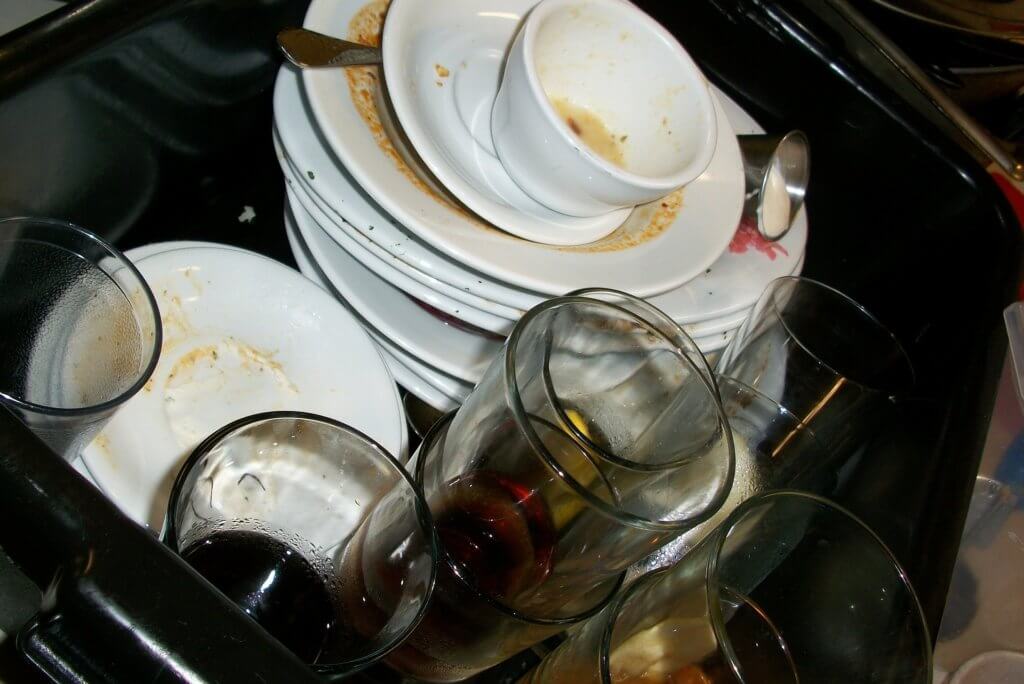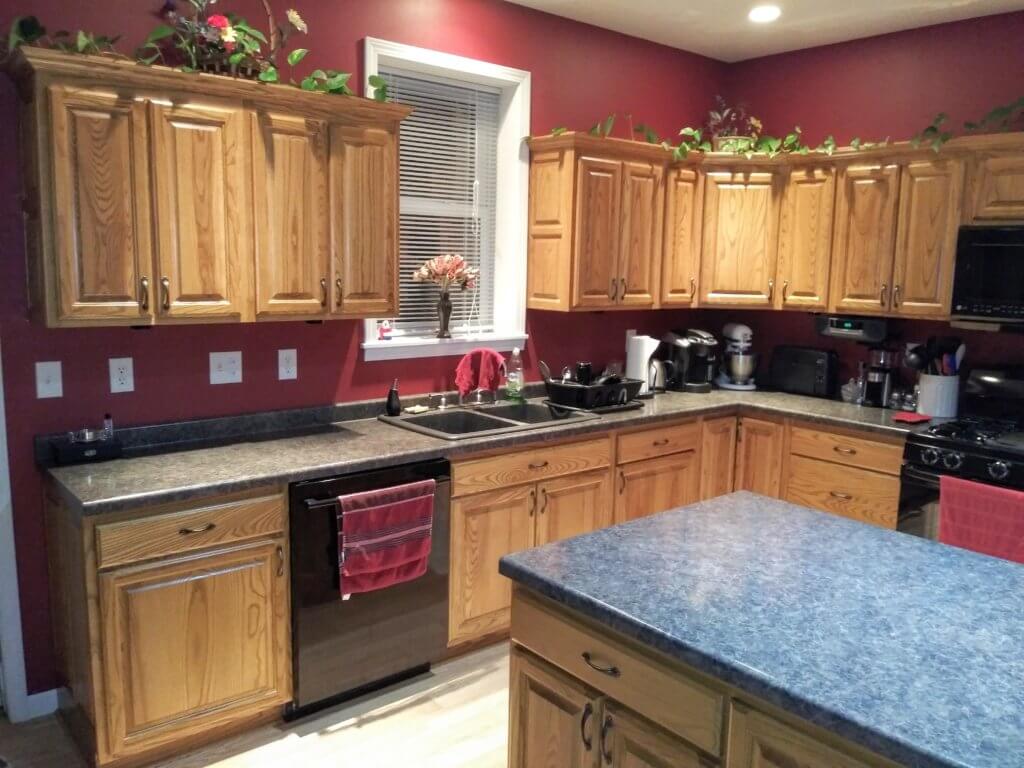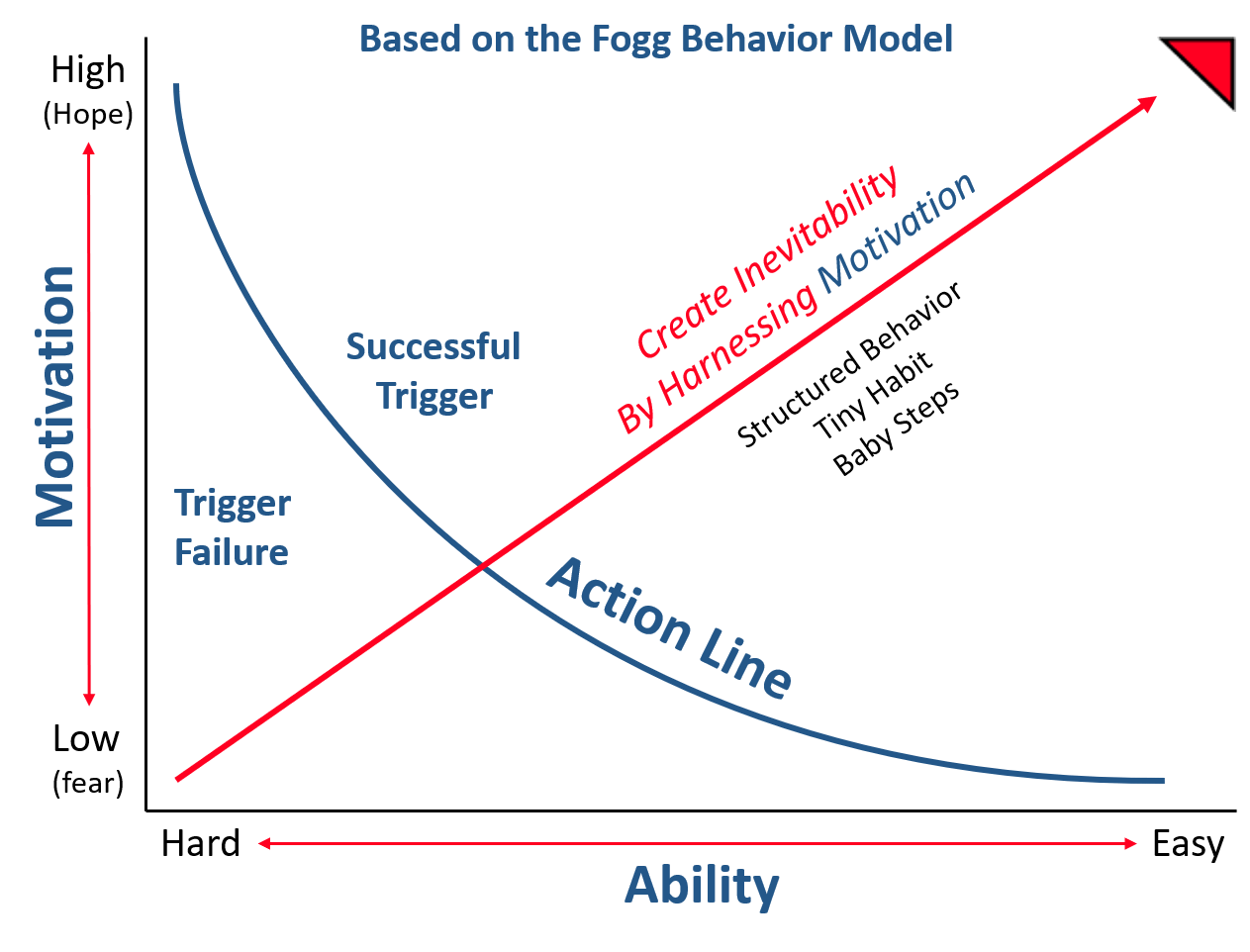What if you found an easy way to become your better self? Would you do it?
What if it took some time and repetition to make it happen? Would you still be interested?
An old adage asks the question – How do you eat an elephant? The answer – one bite at a time.
Recently I asked my wife to share how she does things. I was interested not so much in the what, but in how she organizes it in her mind.
She is one of the most industrious people I know. She handles an enormous load of tasks and roles.
So, I must say, I’m impressed. You may think that I’m biased (a little), but ask her peers, her bosses, her students, her professors… I think the word they would use for her is productive.
This last week she handed me a couple of examples to look at. I began to try to define it a bit for the rest of us.
I want to be able to tap into whatever mojo that allows her to get things done. And I found it in the Fogg Behavior Model.
Fogg Behavior Model
The Fogg Behavior Model was created by B.J. Fogg to explain the relationship between motivation, ability, and prompts. In other words, to complete a task, you must have the ability, the motivation and some kind of prompt or trigger to start the process.
The harder the task, the greater the ability and motivation needed to accomplish it. Ability can be learned and is, therefore, more of a constant.
Motivation is more like a waveform. It is the most variable of the three components.
So, if your motivation is high, use it. Harness your motivation to create inevitability.
You want to move hard tasks to easier tasks. This allows them to be accomplished with lower motivation which increases success.
Some of the ways to harness motivation are to create
- Structured behaviors
- Tiny Habits
- Baby Steps
More on this at a later date.
What Are Prompts?
But what about the prompts? You could call them a variety of things – cues, call to action, request, or triggers. But triggers must be done at the right time and place. Let me explain.
A trigger can be a reminder to do something or to not do something. Here are a couple of examples my wife uses.
After supper, I brush my teeth. This prompts me not to eat anything else that night. My husband can offer me my favorite candy and I will say, “No thanks. I brushed my teeth.” This is my trigger not to eat anything else.
I have even brushed my teeth to stop myself from eating earlier in the day…like on those days when you just seem to eat everything. For some reason, when I brush my teeth, it makes me not want to eat anything else.
So what is going on here? I have created a habit to control my eating by connecting one of my normal activities to action or no action. In this case, I won’t eat until my next meal or if my body is telling me it needs some food.
Another trigger I have established is connected to exercise. I have trained myself to exercise right when I get up in the morning. I lay out my clothes next to my bed so when I get up, I can just slip them on.
This is my trigger for exercise. If I don’t have clothes waiting for me by my bed, I sometimes just jump in the shower and don’t exercise. I now know that I have a better chance of exercising if my clothes are readily available and I don’t have to think about it, I just do it.
So, each night before I go to bed, I set out exercise clothes to prompt me to exercise when I get up. I know that if I wait until the day gets going, I won’t take the time to exercise. So, by triggering that action first thing in the morning, I know that I will get it done. No need to think about or plan it.
OK then, I’m beginning to figure out what she does naturally.
Now I’m not saying that I don’t have some routines or rituals. I just am looking at automating more in my life to decrease the number of decisions I have to make each day. I could get into the whole subject of overwhelm but will leave that for later.
If you want to read more, Dr. Fogg has a book that came out at the end of 2019 called Tiny Habits. You can order it at Amazon. I’ll include a link HERE and on the Resources Page.
He also has a Free 5 Day Program to introduce you to creating your own Tiny Habits.
My Experiment
I took the course and got results. Here is what I set up for my Tiny Habits.
- After I finish eating, I will put my dishes in the dishwasher
- While I make my coffee, I will put away clean dishes
- After I wake up, I will put on clothes to exercise

As you can see, two of the tiny habits I have created are based on the dishes piling up on the counters. I did this for just three days and WOW! The kitchen is a lot cleaner.
I know I should have been doing this anyway. Maybe it was just a season of mess. But truly, I think all I was missing was the prompt.
Here is a picture of my kitchen. Maybe not totally clean, but better since working on just two tiny actions connected to foundational habits (i.e. making coffee and eating).

There you have it. A simple approach to building new habits that work! Crazy, right?
Think of it as an experiment and you will have a lot more fun. You are just trying it out to see how it works for you. If you make it too big, try chunking it down to a starter step or a tiny version of what you want.
What habit would you like to build this year? Hey! get wild and do your own experiment. You just might find that it helps you with the next step in your journey.
Let me know what you’re thinking of doing in the comments below.
